Today’s Current Affairs: 28th May 2024 for UPSC IAS exams, State PSC exams, SSC CGL, State SSC, RRB, Railways, Banking Exam & IBPS, etc
Table of Contents
Mundra Port:
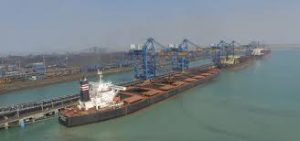
Adani Group’s Mundra Port recently saw the largest ever container ship to dock at an Indian port when the almost 400-metre-long MSC Anna came visiting.
- Mundra Port is the largest private port and the largest container port in India
- It is located on the north shores of the Gulf of Kutch, near Mundra, Kutch district, Gujarat.
- It is a deep-draft, all-weather port.
- It is also a special economic zone (SEZ).
- As much as 33 per cent of India’s container traffic flows through the port.
- It is run by Adani Ports and Special Economic Zone Limited (APSEZ),which is India’s largest commercial port operator and accounts for nearly one-fourth of the country’s cargo movement.
- With a capacity of 260 MMT, the port handles over 155 MMT (FY 2022-23), which constitutes nearly 11% of India’s maritime cargo.
- The port has 26 berths and two single-point moorings, which allow it to accommodate a wide range of vessels.
- The port handles a wide variety of cargo, including containers, dry bulk, break bulk, liquid cargo and automobiles.
- It also has the country’s largest coal import terminal, which facilitates faster cargo evacuation with minimal turnaround time.
- Mundra Port’s rail is connected to the national rail network and cargo can be handled for any location in India.
National Green Hydrogen Plant : Vijaipur, Madhya Pradesh’s
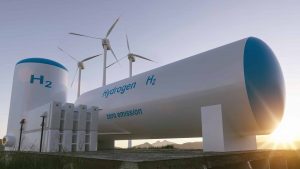
State-run GAIL (India) Ltd. recently inaugurated its first 10 MW Green Hydrogen Plant under the National Green Hydrogen Mission in Madhya Pradesh’s Vijaipur.
- National Green Hydrogen Mission was approved by the Union Cabinet on January 4,
- Aim is to make India a Global Hub for the production, utilization, and export of Green Hydrogenand its derivatives.
- Under the Strategic Interventions for Green Hydrogen Transition Programme (SIGHT), two distinct financial incentive mechanisms
- Incentive for manufacturing of electrolysers
- Incentive for production of green hydrogen.
- The Mission will also support pilot projects in emerging end-use sectors and production pathways.
- Regions capable of supporting large-scale production and/or utilization of Hydrogen will be identified and developed as Green Hydrogen Hubs.
- An enabling policy framework will be developed to support the establishment of a Green Hydrogen ecosystem.
- A robust Standards and Regulations framework will be also developed.
- Further, a public-private partnership framework for R&D (Strategic Hydrogen Innovation Partnership–SHIP) will be facilitated under the Mission.
- A coordinated skill development programme will be undertaken under the Mission.
Green Hydrogen:
- Hydrogen is the simplest chemical element, the first in the periodic table with atomic number 1.
- It is light, can be stored and does not generate pollutant emissions by itself.
- Green hydrogen is made by using clean electricity from surplus renewable energy sources, such as solar or wind power to electrolyse water.
First Woman From The Nyishi Tribe To Scale Mt. Everest:

Mountaineer and cricketer Kabak Yano etched her name in history recently by becoming the fifth woman from Arunachal Pradesh and the first woman from the Nyishi tribe to scale Mt. Everest.
- Nyishi Tribe are the largest ethnic group in Arunachal Pradesh.
- In Nishi, their traditional language, Nyi refers to “a man” and the word shi denotes “a being”, which combined together refers to a civilized human being.
- The Nyishi language belongs to the Sino-Tibetan family; however, its origin is disputed.
- They are concentrated in eight districts of Arunachal Pradesh, East Kameng, Pakke Kesang, Papum Pare, Lower Subansiri, Kamle, Kra Daadi, Kurung Kumey and Upper Subansiri.
- They also live in Sonitpur and the North Lakhimpur district of Assam.
- Their population of around 300,000 makes them the most populous tribe in Arunachal Pradesh, closely followed by the combined tribes of the Adis and the Galos, who were the most populous in the 2001 census.
- The Nyishi support themselves with slash-and-burn agricultureand hunting and fishing.
- Along with agriculture and allied activities, the Nyishis are experts in handicrafts such as weaving, cane and bamboo works, pottery, blacksmithing, wood carving, carpentry, etc.
India’s Top Trading Partners:

India has recorded a trade deficit, the difference between imports and exports, with nine of its top 10 trading partners in 2023-24, according to official data.
- China has emerged as India’s largest trading partner with $118.4 billion of two-way commerce in 2023-24, surpassing the US.
- The bilateral trade between India and the US stood at $118.28 billion in 2023-24.
- Washington was the top trading partner of New Delhi during 2021-22 and 2022-23.
- In 2023-24, the United Arab Emirates (UAE), with USD 83.6 billion, was the third largest trading partner of India. It was followed by Russia ($65.7 billion), Saudi Arabia ($43.4 billion) and Singapore ($35.6 billion).
- India’s total trade deficit in the last fiscal narrowed to $238.3 billion as against $ 264.9 billion in the previous fiscal.
- The trade deficit with China rose to $85 billion, Russia to $57.2 billion, Korea to $14.71 billion, and Hong Kong to $12.2 billion in 2023-24 against $83.2 billion, $43 billion, $14.57 billion, and $8.38 billion, respectively, in 2022-23.
- India has a trade surplus of $ 36.74 billion with the US in 2023-24. America is one of the few countries with which India has a trade surplus.
- After the US, the Netherlands offers a surplus of $17.3 billion on the back of being a hub of India’s petroleum trade with Europe.
- Other countries with which there is a trade surplus are the UK ($4.5 billion), Italy ($ 2.9 billion), France ($902 million), and Belgium ($598 million).
- India has a free trade agreement with four of its top trading partners – Singapore, the UAE, Korea, and Indonesia (as part of the Asian bloc).
Fourth International Conference On Small Island Developing States:
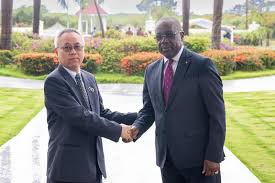
The Fourth International Conference on Small Island Developing States (SIDS-4) will be convened from May 27-30, 2024.
Small Island Developing States (SIDS):
- These are a distinct group of 39 States and 18 Associate Members of United Nations regional commissions that face unique social, economic and environmental vulnerabilities.
- The three geographical regionsin which SIDS are located are: the Caribbean, the Pacific, and the Atlantic, Indian Ocean and South China Sea (AIS).
- SIDS were recognized as a special case both for their environment and development at the 1992 United Nations Conference on Environment and Development held in Rio de Janeiro, Brazil.
- For SIDS, the Exclusive Economic Zone (EEZ)—the ocean under their control—is, on average, 28 times the country’s land mass.
- They are highly vulnerable developing countries as they suffer from low economic diversification, often characterised by high dependence on tourism and remittances, volatility due to fluctuations in private income flows and the prices of raw materials, and debt stress situations.
- For many SIDS, the majority of the natural resources they have access to come from the ocean.
DD Kisan Deployed Two Artificial Intelligence Anchors:
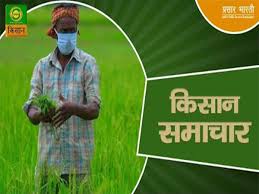
DD Kisan deployed two Artificial Intelligence anchors as part of the initiative to present the television channel in a new avatar
- The anchors have been named as ‘AI Krish’ and ‘AI Bhoomi’, and can speak in 50 Indian and foreign languages.
- These news anchors are computers, which are exactly like a human, or rather, these can work like a human. They can read the news 24 hours and 365 days without stopping or getting tired.
- The farmer viewers will be able to see these anchors in all the States of the country.
- These AI anchors will provide every necessary information about agricultural research happening in the country and at the global level, trends in agriculture mandis, changes in the weather, or any other information of government schemes.
DD Kisan:
- It is the only TV channel in the country, which has been established by the Government of India and is dedicated to the farmers.
- This channel was established on 26 May 2015.
- The objective of establishing the DD Kisan Channel is To always keep the farmers informed about the changes in weather, global and local markets etc., so that farmers can make appropriate plans in advance and make the right decisions on time.
Grand Prix prize : All We Imagine As Light

Indian director Payal Kapadia’s debut film “All We Imagine As Light” won the Grand Prix prize
- All We Imagine As Light is an Indo-French production about a nurse, Prabha, and her friend, Anu, who embark on a transformative road trip.
- Kapadia’s previous documentary, A Night of Knowing Nothing, won the Golden Eye award at Cannes.
Cannes Film Festival:
- The Cannes Film Festival is a prestigious annual event held in Cannes, France, showcasing international films and attracting global attention for its film premieres, red-carpet events, and exclusive industry gatherings.
- It began in 1946 and is renowned for awarding the prestigious Palme d’Or to outstanding films.
First Global Mangrove Assessment:
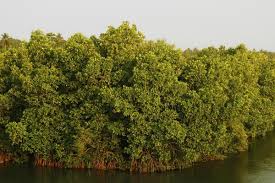
The first global mangrove assessment by the International Union for Conservation of Nature (IUCN), warns of the imminent collapse of South India’s mangrove ecosystems due to pollution, deforestation, and coastal development.
- Unlike the ecosystems in western and eastern India, those in the south are highly vulnerable to collapse, threatened further by rising sea levels and severe storms linked to climate change.
- The IUCN Red List of Ecosystems (RLE) has assessed mangrove ecosystems globally for the first time, revealing alarming findings.
- Half of the assessed global mangrove ecosystems are at risk of collapse, with nearly 20% classified as high risk.
- Major threats include climate change, deforestation, development, pollution, and dam construction.
- Climate change alone jeopardizes one-third of assessed mangrove
- Sea-level rise is predicted to submerge 25% of global mangrove area in the next 50 years.
- Without significant intervention, by 2050, climate change and sea-level rise could lead to the loss of 1.8 billion tonnes of stored carbon and expose 2.1 million lives to coastal flooding.
- Indian mangroves vary in status: Andaman and Bay of Bengal are classified as Least Concern, while South India is Critically Endangered, and West India is Vulnerable.
- Mangroves play a crucial role in disaster risk reduction, carbon sequestration, and supporting biodiversity and fisheries.




